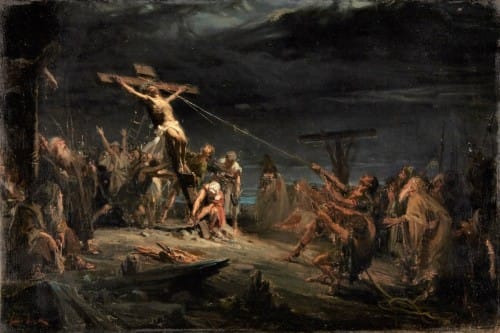
7 Statements of Jesus From the Cross Revealed
“He died not for men, but for each person.” C. S. Lewis
The seven last statements of Jesus while on the cross were:
- Luke 23:24 ”Father, forgive them for they know not what they do.”
- Luke 23:43 “Truly, truly I say to you, this day you shall be with me in Paradise
- John 19:26-27 “Woman, behold your son… son behold your mother.”
- Matthew 27:46 “My God, my God why have you forsaken me?”
- John 19:28 “I thirst.”
- John 19:30 “It is finished.”
- Luke 23:46 “Father, into your hands I commend my spirit.”
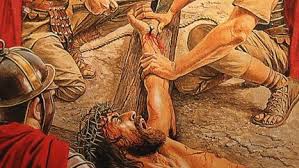
Jesus was on the cross for 6 hours and made only 7 statements. Six is the number of man and seven is the number of completion. Jesus knew exactly what He was saying and the timing of each statement. He had always been aware that being self sacrificed on the cross at Passover and arising from the dead 3 days later would be the crowning event of His ministry on earth. The Passover lamb of the exodus was always only a symbolic shadow event of His self sacrifice as the Messiah of mankind. Yet even under the horrifying and excruciating circumstances of His crucifixion, He was still in complete control. The word excruciating is a derivative of the word crucifixion. Jesus was speaking from His cross to His family, the attending religious leaders and the crowds of onlookers. However, He was also speaking down to His followers through the ages. He is allowing them to look back through a window in time and into His heart in order to more fully understand God’s plan for the salvation of mankind.
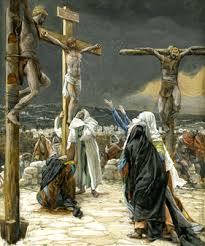
The first statement of Jesus from the cross was, “Father, forgive them for they know not what they do.” How does God forgive? Does He simply look away and ignore sin? What mechanism can a righteous and Holy God use to not only forgive but to completely forget sin? God sees sin for the grievous act of rebellion that it is, and the tremendous sacrificial event it will take on His part to make sin forgivable. The irony of Jesus’ statement is that He is asking God to “forgive them” for their cruel unjustified action of crucifixion that will in reality, make the forgiveness of their sins possible. Jesus is also living His own words concerning forgiveness. He often questioned how could God forgive a person if, out of pride, they cannot forgive their fellow man. All people are God's creation and fellow brothers and sisters. The essence of a righteous person is one who loves God in their heart and then outwardly shows that love by loving mankind (John 15:12).
The essence of sin is pride. Sin originated in the prideful heart of Satan (Isaiah 14:13). Pride is a conscious refusal to show love and respect for God through obedience to His will. Why is it that mankind finds it so difficult to perform this one simple act? It is because of pride that they find it demeaning to bow to the will of anyone including their Creator? Is it because they want to take pride in their actions in the belief that their works will ultimately be rewarded with eternal life. Perhaps they do not really believe they need a savior because instead, they believe they can earn their salvation by following man made laws and occasionally deny themselves some worldly pleasure. In other words, they do not want to approach God with their head bowed and ask for forgiveness and salvation. They want to march up to God, head held high with pride and demand eternal life because God owes them a well-earned reward not a gift. This is the major tragic fault with all other world religions. They are all clear that they cannot guarantee a worshipper redemption in the eyes of God. They cannot guarantee salvation to their followers because they have no savior. With all world religions, a worshipper can only hope that upon their death, God will judge them to have faithfully followed all the laws and customs of their particular religion, and that their good works will outweigh their bad works. Only then will they be allowed to enter Heaven because they will have earned their right to be rewarded by God with eternal life.
Another reason many refuse to repent of their sins or refuse to believe in God is because God is an inconvenient truth. If you believe there is a Creator God, then it follows that He probably has a plan that involves rules and expectations. It is following someone else’s plan and rules that most people reject out of pride. Why buy into a belief system based on an invisible God when you have the option to set your own plan and follow your own rules. Or, why not create a kinder gentler and undemanding god that has no expectations of how you live your life. Or, drop the idea of a personal God and go with the idea of being spiritual. Simply believe there is some force somewhere that emanates good will through space towards all of creation. Better yet, why not just be your own god. You’re smart, nice, generous and loving to your family and friends. Why do you need God? This is the great lie that Satan whispered into the ear of Adam and Eve (Genesis 3:5). Just because a person believes there is a God, does not mean that person will receive eternal life. Scripture tells us that only a fool says there is no God (Psalm 14:1).
Again, it is important to understand that the very first thing Jesus did during His crucifixion was to ask God to forgive His executioners because He had first forgiven them. This does not mean that God necessarily forgave them for their actions. It simply meant that Jesus lived what He preached. Jesus said that it was wrong for a person to bring a Temple offering to God without first forgiving those that had offended them (Matthew 5:24). This is why Jesus’ first words on the cross was to forgive His executioners. Jesus even put this requirement in the prayer He taught His disciples known as The Lord’s Prayer. He said, “…forgive us our sins just as we have forgiven those who have sinned against us.” (Matthew 6:9-13) However, to forgive someone who has wronged you does not mean that the person’s sins are forgiven in the eyes of God. It means that you have forgiven them because it is the will of God that you, as a child of God, do this. You understand the logic that if God is willing to forgive you of your sins, how can you not in turn be expected to forgive those who have wronged you. God will judge and condemn all those who have sinned against Him and refused to repent (Romans 12:19). And, it was probably Jesus praying this prayer of forgiveness out loud from the cross that caught the attention of one of the robbers next to Him. It must have occurred to him that if Jesus could forgive His Roman executioners, then surly Jesus would forgive the robber of his sins. This probably gave him the courage to speak up and ultimately receive salvation just a few hours before his death.
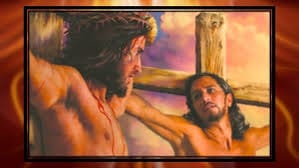
Jesus’ second statement from the cross was “Truly, truly I say to you, this day you shall be with me in paradise.” (Luke 23:43) Many scholars believe that this story of the repentant robber proves the doctrine of salvation by faith alone. That is, if we only have faith in our salvation through Jesus, we will go to Heaven regardless of what we did on earth. They point to the repentant robber on the cross who had faith but no time to have produced any good works. However, this scene between Jesus and the two robbers requires a closer look.
The first robber said, “if you are the Christ, save yourself…and us!” (Luke 23:39). The second robber, having heard Jesus forgive His executioners immediately rebuked the first robber saying, “Do you not fear God?” Here he clearly shows us he has fear and respect for God. Then he says, “For we are receiving the just rewards for our deeds.” So, the second robber had obviously accepted the responsibility of what he has done, is confessing his sins before man and God and he does not hold any hatred towards his executioners. Next, in the midst of all the witnesses gathered, he turns to Jesus and says, “Lord, remember me when You come into Your kingdom.” He has now confessed Jesus as a King with a Kingdom when everyone else had abandoned Him. This robber has shown respect for God, has publicly admitted his sins and has publicly expressed his faith in Jesus as his Lord and Savior. As for this robber’s fruits, just think of how many tens of thousands of prisoners over the past two thousand years, having heard this story, have accepted Christ as their Savior and received eternal life. This unnamed robber has no doubt been given great rewards for the many souls saved because of his act of repentance just before his death. Jesus assured this man as only the Son of God could, that he would soon be with Him in Paradise.
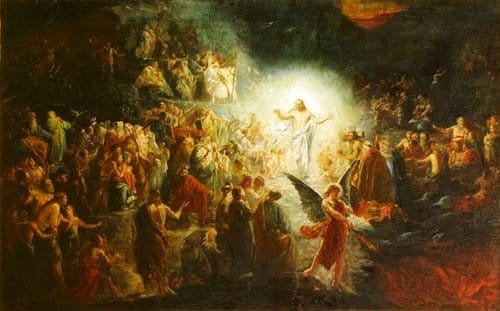
Jesus used the term Paradise and not Heaven for a reason. Since Adam, the spirits of all dead people went down into the earth to a place called Sheol or Paradise. The repentant dead rested on one side of this Land of the Dead while the unrepentant were is a constant state of discomfort on the other side. There, the repentant spirits remained until a Saviour could come and release and lead them into Heaven. This occurred at the death of Jesus when His spirit arrived in Sheol and He preached the good new of salvation through His death, burial and impending resurrection. After three days, His spirit ascended up from Sheol and re indwelled His body. Late Sunday evening, Jesus returned back down into Sheol and led all the righteous spirits up from Paradise and into Heaven to be in the presence of God (Ephesians 4:7-9). All unrighteous spirits continue to be remanded to Sheol where they await the day of their Judgement.
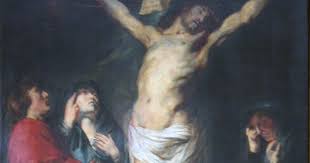
Jesus’ third statement from the cross was, “Woman, behold your son… son behold your mother.” Why does Jesus address Mary as “Woman” instead of mother, mama or at least Mary? Literally, He is addressing Mary as woman or madam which is a title of respect. Figuratively, Jesus is telling all mothers and all people to look at the suffering and lives cut short due to death caused by the curse of sin. And this curse was brought about by the sin of the women Eve in the Garden who ate the fruit in rebellion against God. It was then that God prophesied to Eve that she would experience sadness in both the birth and rearing of children. And here, four thousand years later, Mary the woman also experiences this same prophesied curse of sadness as she approaches the Tree of Life which is now the cross on which her child is suffering. Prophetically, He is reminding us of the first prophecy in the Bible which was given by God. He revealed that the head of the serpent {Satan} and his seed {sin, Nephilim, Antichrist} will ultimately be crushed by the Seed {Jesus} of the woman {Mary} (Genesis 3:15). Eve’s disobedience to God’s command brought sin, death, the grave and Sheol or Hell to all mankind. And it happened at the foot of the Tree of Knowledge. However, Mary was obedient to the angel of God at her conception, fulfilled this ancient prophecy by giving birth to the world’s Savior, and now found herself at the foot of the other tree in the Garden, the Tree of Life. Eve, the first woman approached the Tree of Knowledge in disobedience and brought death to mankind. Mary, the second woman approached the Tree of Life in obedience and her son brought eternal life to mankind. The head of Satan was now being crushed, through the second woman’s Seed. Through the first sinless man Adam came sin and death. Through the second sinless man Jesus, came the ability for mankind to receive forgiveness of sin and eternal life (I Corinthians 15:20-22). Eve the first woman thought her first born son Cain was the savior God had prophesied in the garden. Instead, he was a rebel, liar and a murderer as was Satan (Genesis 4:1,8-9). Mary the second woman knew that her first born son Jesus was the Savior God had prophesied in the Garden. He was obedient to the will of God unto death, always spoke the truth and brought eternal life to mankind.
Jesus was also saying to his mother, “…behold your son,” meaning you of all people know that I was born into this world to fulfill God’s plan of which My death is a part. You were told by the angel at My conception that I would reign as a King so have courage and faith in God (Luke 1:31-33). And lastly, Jesus was saying to His mother that from this day forward she should consider John as her son and for John to consider Mary as his own mother (John 19:26-27).
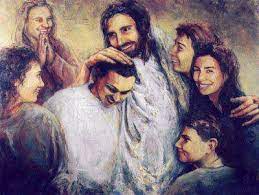
Scripture is clear that Jesus had several biological half-brothers and sisters who were born after Him. None of them believed in Him as the Messiah during the time of His ministry. In fact, they accompanied Mary to the city of Capernaum to talk with Him. There they attempted to explain the many dangers He faced if He continued to upset the authorities of Judah and Rome (Mark 3:31; Luke 8:19). His half-brothers James and Jude would only come to believe that Jesus was the Messiah when they saw Him after His resurrection (Mark 6:3,15:20). James would also become the leader of the early church and eventually be martyred. Therefore, Jesus wanted His mother taken care of by John. He knew how deeply John loved Him, and He knew John would be His only disciple to live a long full life and not be martyred (John 21:21-22).
When John was in his nineties, he was exiled by Caesar to the Isle of Patmos. One day while he was on the shore praying, Jesus suddenly appeared to him. It was at this meeting that Jesus revealed to John the timeline of cataclysmic events that would unfold on earth over a 3.5 years period. Jesus wanted His followers to know that in the darkest hours of this coming Great Tribulation, He had informed them of exactly what to expect, that the testing would only last 42 months and that it would end with His Second Coming. He told them not to fear those chaotic times but instead look up, because their salvation was close at hand (John 21:22; Luke 21:28).
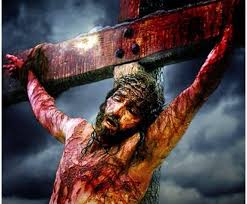
Jesus’ fourth statement was, “My God, my God why have you forsaken me?” Why did Jesus say this? Did God really forsake His only begotten Son in whom He was well pleased? Many commentators say God did not forsake Jesus, but instead He was never as close to Him as when He was at the cross. But that cannot be true because Jesus said, “My God, My God why have You forsaken Me?” (Matthew 27:46; Psalm 22). Here we see Jesus no longer referring to God as Daddy or in Hebrew Abba, but now for the first time formally as,” …My God.” So, we are now witnessing at this moment, a one hundred and eighty degree turn in Jesus’ perception of the relationship between Himself and God the Father. Therefore, according to Jesus, and in His own words, God had in fact turn His back on Him. But there was a righteous reason why God had to do this.
Jesus always knew the day would come when He would be crucified at Passover as a sacrifice or propitiation for the sins of mankind. The nation of Judah was given the choice to follow Him as their Messiah. Had they followed Him, the Kingdom that was once at hand would have officially arrived. But, the Jewish civic and religious leaders freely chose to reject Him. Their rejection of Him was not predestined. Jesus knew they would reject Him, but it was a decision they freely made. Jesus told His disciples on three separate occasions that He would be rejected and killed by crucifixion. However, they apparently found it completely incredulous that the most famous Rabbi in the history of the nation of Judah with tens of thousands of followers would be crucified by His own people in Jerusalem. No rabbi had ever healed, prophesied, interpreted scripture and brought the dead back to life as Jesus had done. And, Judah had never produced a healer who was able to give sight to a person born blind. Only Jesus was able to do this. The idea of His execution was so preposterous to them that Scripture says they found it incomprehensible (Luke 18:34).
However, Jesus always knew exactly when, where and how He was to die. He attended His last Passover in April of 33 A.D. knowing the exact timeline of His trial, death, burial and resurrection (Matthew 20:17-19). Jesus’ trial, toucher and execution were never His fear. His fear was knowing that, when they nailed His body to a tree or the cross and raised it up, He would at that exact moment become sin personified. A curse in the eyes of God and thus would be separated from God for the first time in all eternity (Deuteronomy 21:23). And at that exact same moment, not only would He be completely alone on the cross, He would become indwelled with all the sins ever committed in the history of the world. Jesus literally became sin incarnate! The human mind cannot possibly grasp the full significance of this moment and the terror it brought with it to Jesus. He who knew no sin literally became sin itself (II Corinthians 5:21). Jesus would become as a cup filled to the brim with iniquity, and God’s righteous wrath concerning sin would now be pour out on Him full and undiluted (Revelation 17:4). God the father, because of His Holy righteous nature was, for the first time in eternity, forced to turn His back and forsake His only begotten human Son Jesus who was the Word of God become flesh (John 1:1). Jesus suddenly experienced exactly what it felt like to all who chose to die in their sins and … it was terrifying!
A second answer to the question Jesus asked on the cross is found in Psalm 22. This is a Psalm of lament and deliverance, as well as victory and of triumph through suffering. By quoting the first verse, He was forcing those Jewish leaders who were witnessing His crucifixion to recall and consider this passage in a new light. He was literally crying out to God in His agony while at the same time quoting Scripture. No doubt a few of the Jewish witnesses, especially the scribes, probably stopped their gloating as they heard this young Rabbi quoting Scripture during His execution! They would have become transfixed as they realize for the first time that this prophecy from King David written 1,000 years earlier was in fact, describing the act of crucifixion through the eyes of Jesus. That they were now prophetically playing a part in His execution as prophesied by David and well before the act of crucifixion had even been invented! The “dogs” mentioned in the verse were the cruel and corrupt Chief Priests and religious leaders who were there mocking Him as He was dying on the cross (Psalm 22:16). Jesus was in effect saying to them, wake up and look at what you are doing! Perhaps the scales of spiritual blindness fell from some eyes. Perhaps some stopped laughing and were now silent, deep in thought and concerned at what they had done in their zeal to destroy what they had considered to be just one more rebellious itinerant rabbi. In a counter intuitive way, Psalm 22 concludes with Jesus reigning royally from a cross that was supposed to have been the ultimate curse of shame (Galatians 3:13).
The fifth statement of Jesus was “I thirst”. It is impossible to comprehend that here we literally have the Word of God who spoke creation into existence asking for a sip of water. And He only made this one small request so that He could free His dry and swollen tongue in order to command Himself to die and thus bring salvation to all mankind. Because of this simple request, He was instead offered an insulting concoction of sour vinegar, perhaps a small amount of myrrh to help numb some of His pain and thus extend His suffering, and gall or urine from His Roman executioners. The Apostle John points out that this act fulfills yet another scripture prophecy as the sponge of vinegar was raised to His mouth (John 19:28; Psalm 69:21, 22:15-16).
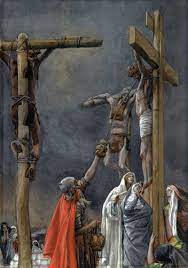
By now Jesus has not slept in 48 hours. He has been tried by the retired High Priest Annas, tried by the current High Priest Caiaphas, tried and beaten by the Jewish religious leaders, tried by the Jewish civil authority the Sanhedrin or Council, tried by the Roman Governor Pilate, tried by King Herod, retried by Pilate and finally a trial by public consensus where He was found guilty on the charge of sedition for truthfully saying He was in fact a King. He has been scourged twice by the Roman guards, nailed on the cross for six hours, suffered the full wrath of God all the while slowly dehydrating and bleeding out from His wounds.
When Jesus said, “I thirst”, an execution guard offered Him a hyssop branch with a sponge attached to it. This branch was the exact same type of branch Moses ordered the Israelites to use when marking their door post with the blood of the sacrificial lamb on the night of the first Passover. It was only by the sacrificing of a lamb and marking their doors with it's innocent blood, that the Angel of Death would be repelled and pass over that house. Jesus’ death would now cause the spirits of His believers to immediately ascend into the presence of God the Father. The spirits of unrepentant people would still continue to be confined down in Sheol or Hell to await a final judgement. The Jews marked the two sides of the door posts and the top. Jesus’s blood stained the two sides of the cross from the nails in His wrists, and the blood from His crown of thorns stained the top of the cross.
Today, when a believer dies, their spirit is immediately with Jesus in a place He has prepared for them (John 14:3; II Corinthians 5:8). Although the bodies of the righteous dead may be buried or cremated, they are referred to as only resting in peace or R.I.P. This is because at the rapture, Jesus will appear in the earth’s atmosphere accompanied by all the spirits of the righteous. He will then give the command for the bodies of the righteous dead to arise and their spirits will re indwell their resurrected bodies. Then, all the righteous living on the earth will now be caught up into the air and Christ will lead His followers into Heaven for the Marriage and Supper of the Lamb. All of these events will occur in “the twinkling of an eye” (I Corinthians 15:52). This term is used to express the shortest amount of time that is divisible. Today we would call it a nano second. Because the bodies of the righteous dead will one day arise, it can be said that the Angel of Death or Satan has been defeated as they are not physically dead in the strictest sense of the word but only waiting or resting until their resurrection. The terms resting or asleep are not to be confused with the false idea of soul sleep which is unscriptural. A person’s soul or spirit never sleeps. Even in death, a person never loses spiritual consciousness. They are always aware of who they are, where they are and where they are going.
When the sponge that was offered to Jesus touched His lips, the Gospel of John says, “He accepted it” (John 19:24). Because Mediterranean vinegar is a product of fermented grapes it would be considered a type of wine. Therefore, Jesus would have only allowed a small amount to moisten His mouth so as to be able to speak His final statement. He would not have swallowed the mixture as that would cause Him to break the vow He had made to His disciples at the Last Supper just twenty-one hours earlier. At the Thursday night supper, Jesus and His disciples drank three of the four traditional cups of Passover wine. Please see related, "Mystery of the Last Supper and 4 Cups Revealed". Jesus then held up the fourth cup known as the Cup of the Kingdom and said, “I will not drink of this fruit of the vine, until the day I drink it new with you in my Father’s Kingdom” (Matthew 26:29; Luke 22:18).
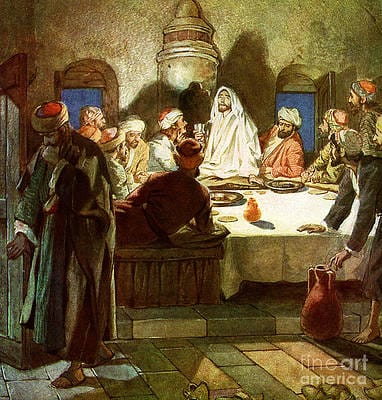
So, the Last Supper was not the traditional Passover Seder, but was instead a hybrid transitional ceremony from the Feast of Passover and law to Communion and grace. The disciples expected to celebrate the actual traditional Passover Feast with Jesus the following evening or Friday. But, unknown to them, Jesus would be placed in His tomb on Friday just before 6:00P.M. So, as far as the disciple were concerned, the Thursday night supper was just another opportunity to eat and converse with their beloved Rabbi. Therefore, they no doubt thought it strange that Jesus, as the host, began this supper in the tradition of a Passover meal. But then He broke from tradition by only drinking three cups of Passover wine and telling them He would drink the fourth cup with them in His father’s kingdom. The disciples would have taken this statement to mean that Jesus was about to make His move to seize the Kingdom of Judah from Rome and rule it from the Throne of David. This idea of Jesus as Messiah was first understood by them when Jesus agreed with Peter’s statement of Him as the Son of God (Matthew 16:13-20). But they had no timeline as to when He would assume the throne as King of Judah. Then, when He intentionally rode the colt of a donkey into Jerusalem on Sunday or Palm Sunday, it was clear to them that He was at last signifying who He was and His immediate mission by way of the prophet Zechariah (Matthew 21:7; Zechariah 9:9).
Passover was literally the remembrance of God sacrificing tens of thousands of Egypt’s first-born sons which resulted in the Jews being freed from the slavery of Egypt and their journey back into the Promise Land. This sacrifice was retribution by God for all the Jewish male newborns that pharaoh had sacrificed to lower the Jewish population and at the same time, appease the Egyptian gods. Passover was figuratively the need for a Messiah or anointed one from God to provide a sacrifice that would not simply cover the sins of the Jewish people from one year to the next but bring eternal forgiveness for all the sins of mankind. And Passover was prophetically about the arrival of Jesus, the first-born and only begotten Son of God who was without original sin, kept the law perfectly and on the Passover of 33 A.D. self sacrificed Himself so that mankind could have access to the promise land of God we know as Heaven. All covenants required the sacrifice of an unblemished animal. Therefore, it is understandable that the Eternal Covenant, the greatest covenant ever made between God and man, would require the greatest of all possible sacrifices. It would require the sacrifice of God’s only begotten human unblemished Son Jesus.
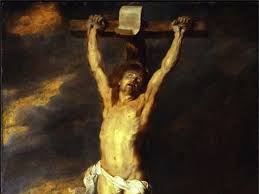
The sixth statement of Jesus was “It is finished”. So, what does the word “It” mean? Literally it means that Jesus had taken on the full wrath of God meant for sinful mankind yet had survived and was not consumed by His fiery judgement. The shadow of this event occurred when Moses was wandering in the wilderness and saw a bush that burned with the fiery judgement of God but was not consumed (Exodus 3:2). Jesus, the Word of God, spoke to Moses from that bush that burned but was not consumed.
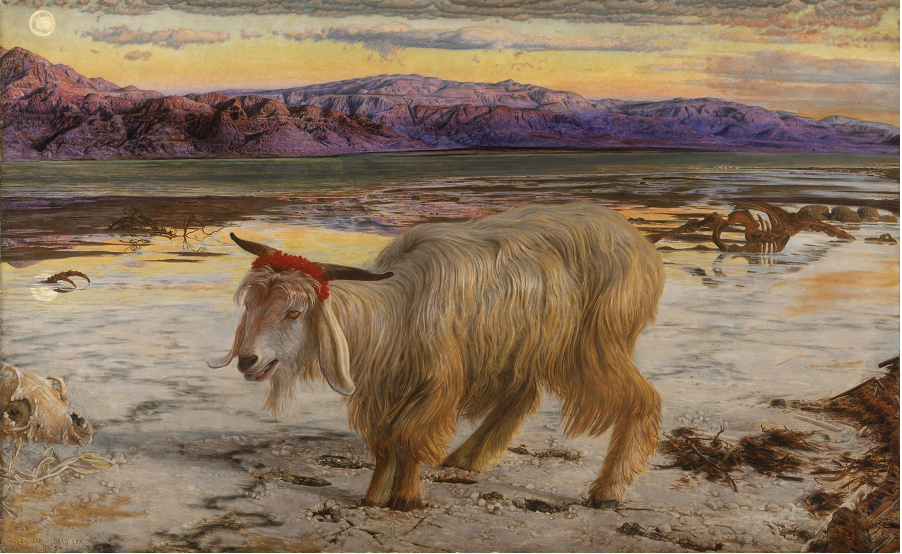
As part of the annual Yom Kipper ritual, the High Priest laid his hands on two sacrificial goats. He did this once a year to symbolically transfer the sins of himself and the people onto the animals. One goat was then sacrificed by fire and the other, known as the scape goat, was led into the wilderness and there released to wander alone until it died (Leviticus 16:10, 21-22). During Jesus’ trial by the High Priest, many members of the Temple Priesthood took their hands and struck Jesus on His head thus unknowingly transferring the sins of themselves and the people onto Him who would take on the role of both animals (John18:22; Mark 14:65).
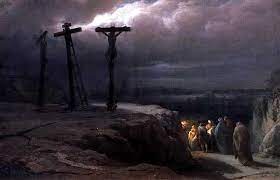
From 12 noon till 3:00p.m. the earth went dark and Jesus did not speak (Matthew 27:45). This would have been the time when He was indwelled by all the sins ever committed by mankind. This was also the time that God poured out His full fiery wrath on the man who had now become sin and a curse as He hung on a tree (Deuteronomy 21:32). And this was the time that the spirit of Jesus wandered lost and alone like the scape goat in the wilderness of sin and accursed by God.
Jesus was also announcing from the cross that He had finished ‘It’ or that part of His initial and exclusive 40 month ministry to the nation of Judah or Israel. He was now ready to lay down His physical life in order to raise it up again translated into a new creation on Sunday, which was the first day of creation (Genesis 1:3; John 10:18). ‘It’ meant that Satan’s greatest power, the fear of death and the grave that he had held over man since the fall of Adam, was “finished”. If Jesus could raise Himself up to life after being crucified and dead for three days, He would also keep His promise to raise believers from death to eternal life with Him. This meant that the days of trying to keep the law yet always failing was over and “finished”. ‘It’ meant that the first prophecy of the Bible given in Genesis concerning the Seed of the woman crushing of the head of the serpent was now accomplished and “finished”. ‘It’ meant that the centuries of the righteous dead being kept apart from God in Sheol was now “finished” and that the salvation and eternal life of mankind had finally arrived. ‘It’ was now time for Jesus to command His own death so that His spirit could then descend into Sheol also known as Paradise, and preach the Good News to those departed spirits of the righteous. They had been long held captive awaiting the day they would meet their Saviour, be set free from Sheol, and allowed to approach the Throne of God (Job 19:26-27). The salvation of mankind had now arrived and the dead would be the first to hear the Good News from Jesus Himself (Ephesians 4:7-10). The living would hear the Good News three days later when Jesus appeared to His disciples. The phrase “It is finished” refers to His entire thirty-three-year mission on earth was now completed. From the stone manger in a lowly stable, to His ministry of God’s love for man, to a stone tomb borrowed from a friend, His mission was finished. And finally, the ‘It” Jesus was referring to was the coming moment when at His death, the Mosaic Covenant of law, judgement and condemnation written by the finger of God on cold stone would be taken to the stone cold grave by the only Jew to ever keep the perfect law perfectly. And with the resurrection of Christ, a new more perfect covenant grounded in God’s love, grace and mercy would now be made freely available to all mankind throughout the world. The Mosaic Covenant of law and judgement was always only a temporary shadow covenant of the new more perfect covenant of grace and mercy. That is not to say that the law given to Moses was not perfect. It was perfect. But it was also perfectly impossible to keep by imperfect mankind. And that was the point of this temporary exercise concerning the law. An imperfect person does not have the ability to keep the perfect law of God and earn salvation and eternal life. They are a gift that only God can give to these who He deems righteous. And today, He deems righteousness through those who have faith in His biological Son Jesus plus nothing else. Jesus, kept the Law perfectly and then self sacrifice Himself on behalf of the sins of Mankind. He had the Power by God to resurrect Himself from the grave and thus create a new covenant of salvation through faith plus nothing else. No laws, no traditions, no tithing, no works. Just faith.
The Word of God was made flesh and the Jewish Messiah had come to God’s chosen people as promised. Jesus had satisfied all Old Testament prophesies concerning His first appearance. The 2000-year Church Age would now begin led by a zealous Jew named Saul or Paul of Tarsus. Finally, the command originally given by God to the Jews to be a “nation of priests” and to protolyze the world about their God was about to begin in earnest (Exodus 19:6). The command originally given by the Word of God or Jesus to Abraham and the Jews, was now once again given by Jesus. But this time it was to His Church that was built upon the rock of His new and more perfect Covenant with God (Matthew 16:18). He told His followers both Jew and gentile to go throughout the world and proclaim the Gospel or Good News that salvation was now freely available (Matthew 28:16-20). In this way, all mankind would learn of the way to salvation through the mercy of God by way of faith in the redemptive power of Christ.
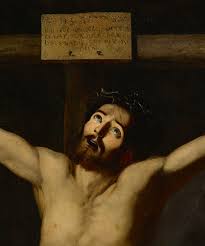
It is now time for Jesus to command His own death so that He could spiritually descend down into the earth to Sheol. There, for the next 3 days and 3 nights, He would proclaim the Good News of salvation to the spirits of the righteous dead held captive (1 Peter 3:19-20; Ephesians 4:7-10). He would explained to them who He was and what He had accomplished on their behalf. He told them that they would soon be leaving Sheol but that He could only lead them out after He Himself had risen from the dead. The spirits of Sheol may have at first been skeptical of Jesus and His claims much as the Jews were during Jesus’ ministry. But they came to believe when they watched as He ascended out of Sheol before their very eyes. Many Jews and Gentile would come to believe in Jesus when He arose on the third day out of His grave. Christ would descend back into Sheol a second time in the early evening of resurrection Sunday to lead these righteous spirits into the presence of God the Father as promised (Ephesians 4:8). This second evening descent into Sheol would count as His third night in the heart of the earth (Matthew 12:40). Please see related: "Jesus In the Tomb 3 Days and 3 Nights". Those held captive in Sheol included the spirits of the Old Testament Saints and many others since the fall of man in the Garden thousands of years earlier. Christ would also free those New Testaments Saints who believed on Him yet died during His earthly ministry. They were also temporarily held in Sheol until Jesus could redeem them by way of the cross.
Jesus, as the First Fruit of the resurrection, was the first to be spiritually released from Sheol, the first to have His body physically resurrected from the dead and re indwelled with His spirit (I Corinthians 15:20-23). He then ascended on Sunday morning as the Jews simultaneously celebrate the Feast of the First Fruits. Again, this Feast was always only a prophetic shadow of Jesus as the first fruit {singular} of the resurrection.
To recap, at His death, Jesus spiritually descended into Sheol for three days and three nights to announce the Good News of the salvation of mankind. He then spiritually ascended up from Sheol early Sunday morning to re indwelled His physical body and then walk out of His tomb. This is the exact same sequence the rapture will follow concerning the righteous dead. Their spirits, currently with Christ, will briefly return into the atmosphere of the earth. There they will re indwell their resurrected bodies. Then, they along with the righteous living saints, will all be led by Christ up to the Bema Seat of judgement for rewards. At that time they will be assigned rewards of governance that they will assume when they accompany Jesus back to earth at His Second Coming. After the rewards are assigned, all the Saints will be given robes to wear and attend the Marriage ceremony of Christ to His Church officiated by God the Father. Then there will be an enormous celebration in Heaven known as the reception Supper of the Lamb.
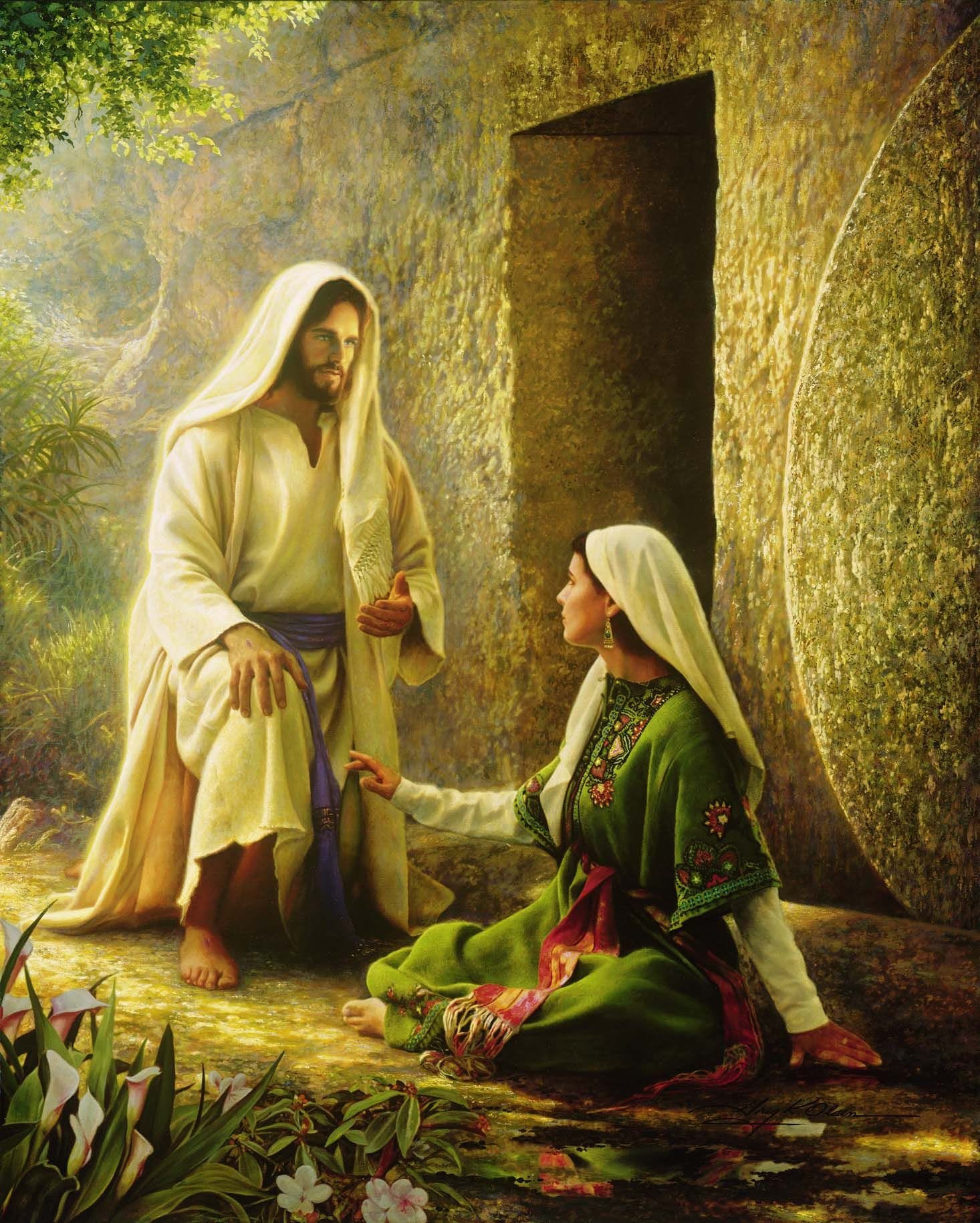
On resurrection Sunday, Jesus first met with Mary Magdalene at His tomb (John 20:14-16). Please see related: “Timeline of the Resurrection”. Then He had and a second brief meeting with a small group of women. They were followers that had earlier met with the two angels at His tomb and were now nearing the city of Jerusalem to tell His disciples that He had risen (Matthew 28:9). He then physically ascended to His Father in Heaven. He would return to earth later that same day to meet with two of His followers on the road to Emmaus (Luke 24:13-16) and still later with His disciple Peter (Luke 24:34). Then, late that same evening, but before He met with His disciples, He descended once again down into Sheol to complete His prophecy of “three days and three nights in the heart of the earth” (Matthew 12:40). It was then that He led all the righteous spirits of the Saints up out of Sheol and into the presence of God. Then He once again descend from Heaven to the earth to appear and share supper with His disciples (John 20:19-20, 24).
Jesus was the first fruit of the resurrection. His leading of the righteous dead into Heaven is referred to the First Fruits plural of the resurrection (I Corinthians 15:20). We are told that these Saint’s and their ascension occurred on Sunday “after” Jesus’ resurrection and ascension to His Father. The rapture of the spirits of the Saints out of Sheol would not have caused any physical issues with their graves. However, Scripture goes on to state that some Saints were bodily resurrected out of their graves and appeared to friends and family members in Jerusalem immediately following Jesus' death on the cross (Matthew 27:52). Scripture does not tell us who these few particular Saints were. One might assume that some were Old Testament Saints judged righteous by God based on the Abrahamic standard of faith plus nothing (Genesis 15:6). Because some may have been dead for many years, no one in Jerusalem would have been able to recognize them for who they were. On the other hand, this small group of resurrected Saints probably included believers in Christ who died during His 40 month earthly ministry. These Saints would have returned to visit with living family members and friends. This would have served as a tremendous public sign of the power of Jesus to resurrect His followers.
With the resurrection of Christ, there was now no longer a need for Sheol as a holding place for righteous souls. The term righteous is not to say that they were in a spiritual state worthy of being in the presence of God. They were not, and this is why they were held for a time in Sheol. They were deemed righteous in that they believed in a Creator God, were repentant for their sins, and tried to help their fellow man whenever possible. Still, it would take the crucifixion of Jesus to absolve them of their sins. Only then could they be released from Sheol as they were now deemed truly righteous and acceptable to be in the presence of God. And, it was from that moment on, that when a believer’s body dies their spirit no longer goes to wait in Sheol. Now it immediately ascends to Heaven to be with Christ (II Corinthians 5:8).
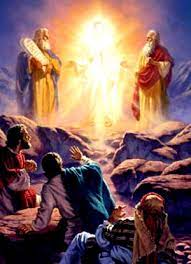
We also know that Moses and Elijah met with Jesus on the Mount of Transfiguration (Matthew 17:3). Please see related: “The Transfiguration”. Since Elijah was raptured alive into Sheol, he would not have been one of these resurrected saints (II Kings 2:11). Moses who was buried by the Archangel Michael, may very well have been one of these resurrected Saints on Sunday morning. However, if he was resurrected at this time, it would have been in a mortal state (Jude 9; Deuteronomy 34:5-8). This would help explain how he could now physically accompany Elijah back to earth as one of the two witnesses to evangelize Israel during the final 3.5 years of the Great Tribulation Period (Revelation 11:3-12).
Scripture also suggests that Jesus only appeared to believers during His last forty days on earth. We might reasonably assume that during this time period, He regularly ascended to Heaven to greet the spirits of His newly deceased followers. However, when a person’s spirit leaves its body, it is no longer confined to the physical time space continuum. Meaning, time only exist in the physical world of space and matter and does not exist in the spiritual world. So, it is entirely possible, and probable, that all saints from Adam to the last believer raptured, will all arrive at the Bema Seat of Christ at the same time never knowing that thousands of years in earth time have gone by in just seconds of spiritual time.
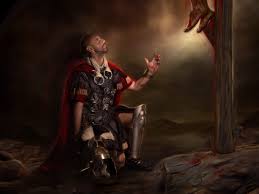
After Jesus said “it is finished”, He commanded His body to die and His spirit to be released with the seventh and final saying, “Father, into your hands I commend my spirit”. While Jesus was on the cross, He had taken on all the sins of mankind, withstood the full wrath of God and survived. He is now still on the cross but no longer under the judgment and condemnation of God. Therefore, He no longer refers to His father as “My God". Instead, He can once again refer to God as Abba or daddy (Matthew 27:46; Psalm 22:1). It is now 3 o’clock in the afternoon and the Temple priests have slit the throat of the afternoon Temple sacrificial lamb. And at that exact same moment, with a loud and strong cry, Jesus laid down His head and died (Matthew 27:46). This small note by Matthew is very interesting. Jesus had literally bled out on the cross over a six-hour period. Yet, in His final moments of life, He showed that He had not only survived the full onslaught of God’s wrath, but was still powerful of voice and in full control of His situation. This final act also brings to mind what Jesus said to His disciples earlier when He stated, “Foxes have holes and birds of the air have nests, but the son of man has nowhere to lay his head” (Matthew 8:20). And yet He knew that the one place He would finally lay down His head would be at the cross. No one took His life from Him…He freely gave His life for all mankind. The fact that He commanded His death and then immediately died caused the Roman Centurion to gasp and say, “surely this was {past tense as Jesus has died} the Son of God!” (Matthew 27:54)
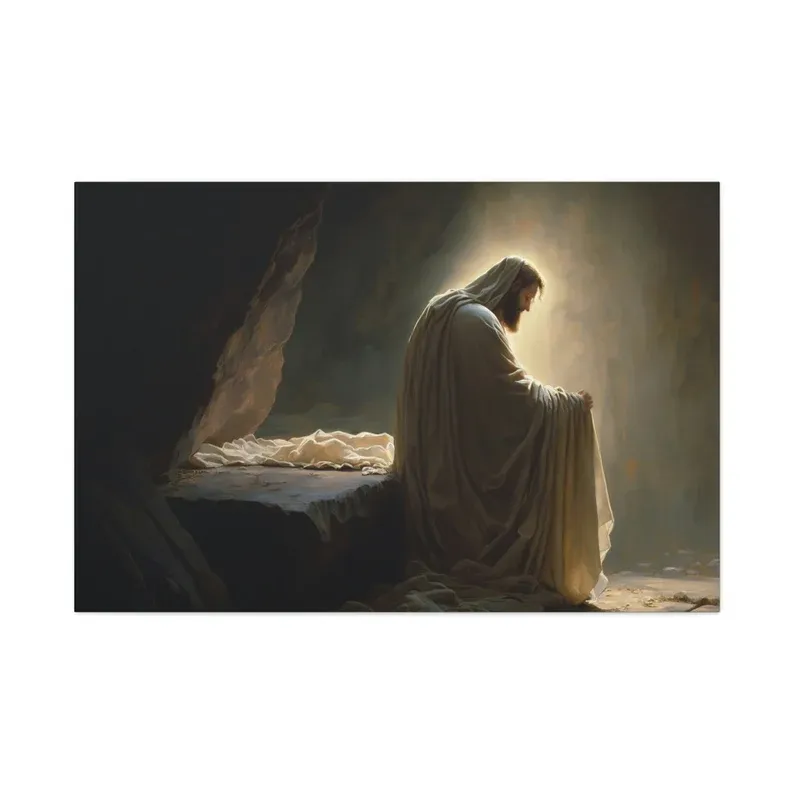
The cross is not the end of the story of Jesus but only a transition. Jesus raised Himself from the dead for a number of reasons (John 10:18). His resurrection was to keep this prophecy He had made on three separate occasions to His followers. This act was also physical proof that, if He could raise himself, He could raise others as He had done during His ministry. By example, He raised a very young girl, a young man and His friend Lazareth in his mid thirties. He also created a small resurrection of the dead later on resurrection Sunday as a sneak preview of the major resurrection of the Church at the Great Rapture.
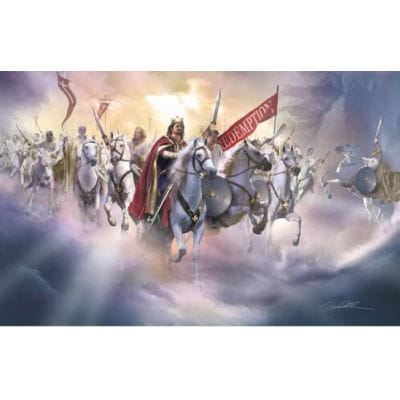
Jesus became the only founder of a religion in the history of the world to rise from the dead and then ascend to God there to remain alive eternality. Sixty years later, the apostle John had a vision in which he saw Jesus or God the Word alive in His earthly physical body on the Throne of God the Father. John also saw Jesus take the deed or title of the earth from the hand of God the Father. John saw Jesus descend to the earth with an army of angels and Saints, defeat the unrighteous and reign as the King of Kings from Jerusalem. Jesus is currently in Heaven in His immortal resurrected body, seated on the right hand of God. We also know He still has His earthly body because the prophet Zechariah prophesied that at His coming, a small remnant of Jews that survived the tribulation period would gather at the Mount of Olives to welcome their descending Messiah. It is then they will see His crucifixion scars and ask Him how He receive the wounds on His hands and feet (Zechariah 13:6; John 20:25). It is sad to note that apparently, the only thing that Jesus took back with Him to Heaven, were the scares that were given to Him by the very people He created and sought to bring salvation too.
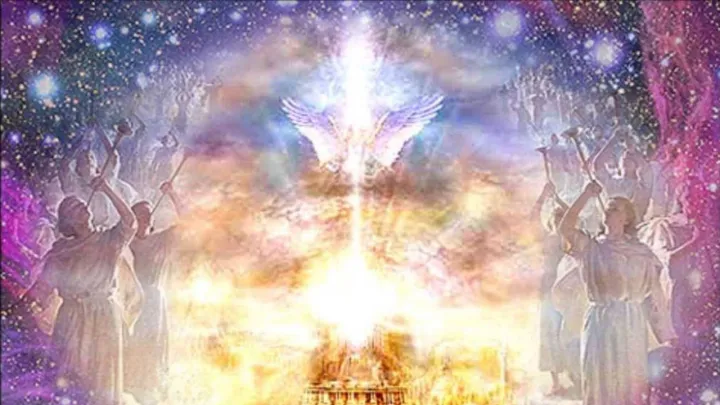
Jesus continues to intercede for believers as the High Priest and King of mankind in the Order of Melchisedec. He continues to speak on behalf of God as the Word of God. He is surrounded by the Old and New Covenant Saints currently in spiritual forms which temporarily serve as a visual representation of their earthly bodies. He, as are all the saints both in Heaven and on earth, is waiting for the day, hour and minute when God the Father, God the Word and God the Holy Spirit agree that the time has come to take back possession of the earth from the governance of mankind. At this time, the greatest leader on earth will be the Antichrist who will have at his command the armies of Europe, the Warsaw Pac and the Middle East. Jesus, who created all things with a command and then paid for the sins of mankind with His life, will now initiate a three-phase process in order to once again bring the earth under His authority. Please see related: “The 3 Phases of the Tribulation”
If you enjoy the information provided on this site, please consider making a donation of any amount to help continue its production. Donate Now